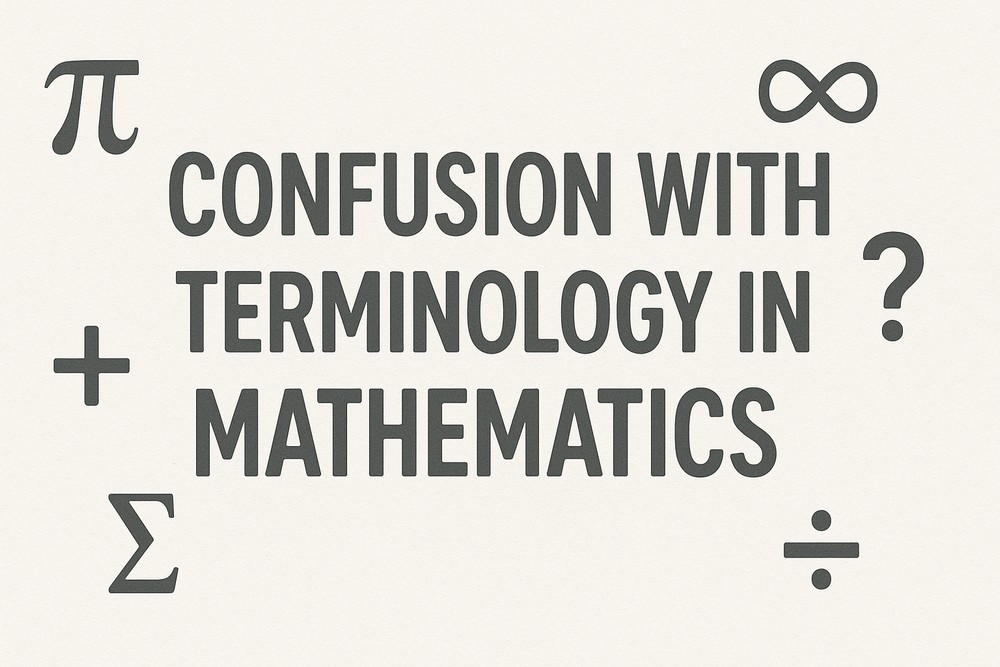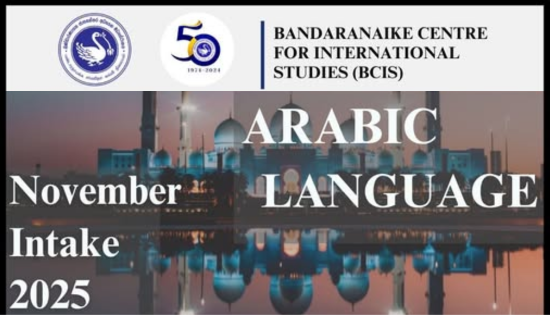Confusion with Terminology in Mathematics

As mathematics has been developed to solve problems faced by our cultures, many words that are being used in mathematics have been borrowed from our spoken languages. Some words have been specifically invented only for mathematical purposes. The mixing of these words can create confusion amongst students. As the vocabulary we use in the classroom has wide implications for the learning of students, it is worthwhile to reflect on the uncertainty that it can arise and how to deal with them effectively.
In mathematics, some English terms can cause confusion because the common usage of the word differs from the mathematical usage of the word. This can lead to misinterpretation and thereby difficulty in conceptual understanding. Let us consider some examples. The common understanding of the word in the English language is marked as E, and the mathematical meaning is marked as M.
Acute : (E) Sharp or severe in effect
(M) Smaller than a right angle
Angle: (E) A viewpoint
(M) The difference of the directions between two straight lines
Even (E) flat or smooth
(M) Exactly divisible by 2
Factor (E) An element contributing to a result or situation
(M) A divisor
Function (E) The purpose for which something is designed
(M) A relation between two sets with a condition on the domain
Power (E) Capability of doing or accomplishing something
(M) Exponent of an expression
Rational (E) Agreeable to reason
(M) Expressible as a ratio of two integers
Root (E) The underground part of a plant or a source of something
(M) A value that satisfies a given equation
Similar (E) Having a likeness or resemblance
(M) Having the same shape but not necessarily the same size
Table (E) Furniture with a flat top
(M) An arrangement in parallel columns to exhibit a set of observations
Volume (E) A large quantity of items or loudness of sound
(M) The extent of space occupied by a solid
There are also some words such as axiom, coefficient, equation, ordinate, isosceles and transcendental that are not commonly used outside the mathematics classroom. This is what separates the language of mathematics from other languages. However, the principles and foundations of mathematics remain consistent no matter what language one speaks. This is why mathematics is considered a universal language as mathematics can be comprehended whatever natural language one speaks.
Let me give some examples how the students may get confused with terminology.
Consider the words ‘minus’ and ‘subtraction’. It must be stressed to the students that ‘minus’ (-) is the symbol used to indicate the operation of subtraction. The expression 5 – (-3) should be referred to as ‘From 5, subtract minus 3’. For convenience if it is expressed as ‘5 minus, minus 3’, the student may misunderstand it and consider it as ‘5 minus 3’, ignoring the second ‘minus’ as done with the ‘plus’ sign.
When it comes to algebra, a term that is commonly used is ‘cancel’ to denote ‘divide’. If the question is to simplify 12x/8, and if the students are told that they can cancel both numerator and denominator by 4 and obtain the answer 3x/2, they might get the wrong idea that they can always cancel similar terms. Therefore, if the question was (12x + 5)/8, they will use this idea to incorrectly write a solution as (3x + 5) / 2.
Another commonly used phrase is ‘cross multiply’ to denote transpose. To solve the equation (2x+3)/2 = (3x-2)/5, if they are told that it can be done through cross multiplication to obtain 5(2x+3) = 2(3x – 2), they may wonder what needs to be done to solve(2x+3)/2 = (3x-2)/5 + 1.
The terminology used in a question may also bring confusion amongst students. A good example can be a question such as “Show that a number divisible by 6 is even”.It is not surprising to find answers of the form “24 is divisible by 6 and it is even”. The student has misinterpreted the question which meant ‘all’ to mean ‘some’. Perhaps the question could have been worded as “Show that every number divisible by 6 is even”.
Consider a question to find the hypotenuse of a right-angled triangle when given the other two sides such as:

Here, if you consider the English meaning of the word ‘find’, you cannot find fault with what the student had done. But what is expected in mathematics is different. Perhaps the question could have been stated as “Find the value of x”.
Similarly, there can be confusion with the words ‘or’ and ‘and’. In the English language, ‘or’ means one or the other but not both. ‘Chicken or Fish’ means either chicken or fish. But in mathematics ‘or’ is inclusive by convention.

The answer to find the set representing A or B is given as A U B = {1,2,3,4,5,7,9}.
Similarly, in English ‘and’ is a conjunction used to connect words. In English, ‘Apples and Oranges’ would mean that all apples and oranges are considered. However, in mathematics ‘and’ means that both have to be true. In the example above A and B represents the set {1,3,5}.
Teachers should be aware of these situations and explain the differences using appropriate examples. Students hear and use words in their daily lives that take on different meanings to what they use in the mathematics classroom. We need to realize that it can bring confusion in the minds of the students and be prepared to help them to make their mathematical journey more successful. The ability to use proper words is essential for developing mathematical proficiency as students need to communicate mathematically effectively either verbally or in written format. As such, the introduction and clarification of related vocabulary of the lesson becomes a crucial activity for the teachers.
R N A de Silva
The author is an educational consultant at the Overseas School of Colombo and a Senior Examiner in Mathematics at the International Baccalaureate Organization.
Related News
Sri Lankan Students Shine at APICTA Awards 2025 in Taiwan, Supported by ESOFT
Sri Lanka recorded a proud moment on the international stage at the Asia Pacific ICT Alliance (APICTA) Awards 2025 in Taiwan, with…
Read MoreABEC Premier Wins Best Educational Service Provider Award at South Asian Business Excellence Awards 2025
ABEC Premier has been named the Best Educational Service Provider (International Education) at the 9th South Asian Business Excellence Awards 2025 —…
Read MorePathway to Australia: How NCHS Helps Students Fast-Track Their Future
For many Sri Lankan students dreaming of studying in Australia, the journey often begins long before stepping onto a plane. At NCHS,…
Read MoreBCIS Library: Hub of Book Clubs, Author Talks and Library Sessions
Nestled in the heart of Colombo, the BCIS Library stands as one of Sri Lanka’s most influential centers for global learning and…
Read MoreDeepfakes and Ways to Outsmart Them
Today, AI is not a new concept, particularly among Gen-Zs. However, what is unknown is how AI fraud and deepfakes may occasionally…
Read MoreCourses
-

MBA in Project Management & Artificial Intelligence – Oxford College of Business
In an era defined by rapid technological change, organizations increasingly demand leaders who not only understand traditional project management, but can also… -

Scholarships for 2025 Postgraduate Diploma in Education for SLEAS and SLTES Officers
The Ministry of Education, Higher Education and Vocational Education has announced the granting of full scholarships for the one-year weekend Postgraduate Diploma… -

Shape Your Future with a BSc in Business Management (HRM) at Horizon Campus
Human Resource Management is more than a career. It’s about growing people, building organizational culture, and leading with purpose. Every impactful journey… -

ESOFT UNI Signs MoU with Box Gill Institute, Australia
ESOFt UNI recently hosted a formal Memorandum of Understanding (MoU) signing ceremony with Box Hill Institute, Australia, signaling a significant step in… -

Ace Your University Interview in Sri Lanka: A Guide with Examples
Getting into a Sri Lankan sate or non-state university is not just about the scores. For some universities' programmes, your personality, communication… -

MCW Global Young Leaders Fellowship 2026
MCW Global (Miracle Corners of the World) runs a Young Leaders Fellowship, a year-long leadership program for young people (18–26) around the… -

Enhance Your Arabic Skills with the Intermediate Language Course at BCIS
BCIS invites learners to join its Intermediate Arabic Language Course this November and further develop both linguistic skills and cultural understanding. Designed… -

Achieve Your American Dream : NCHS Spring Intake Webinar
NCHS is paving the way for Sri Lankan students to achieve their American Dream. As Sri Lanka’s leading pathway provider to the… -

National Diploma in Teaching course : Notice
A Gazette notice has been released recently, concerning the enrollment of aspiring teachers into National Colleges of Education for the three-year pre-service… -

IMC Education Features Largest Student Recruitment for QIU’s October 2025 Intake
Quest International University (QIU), Malaysia recently hosted a pre-departure briefing and high tea at the Shangri-La Hotel in Colombo for its incoming… -

Global University Employability Ranking according to Times Higher Education
Attending college or university offers more than just career preparation, though selecting the right school and program can significantly enhance your job… -

Diploma in Occupational Safety & Health (DOSH) – CIPM
The Chartered Institute of Personnel Management (CIPM) is proud to announce the launch of its Diploma in Occupational Safety & Health (DOSH),… -

Small Grant Scheme for Australia Awards Alumni Sri Lanka
Australia Awards alumni are warmly invited to apply for a grant up to AUD 5,000 to support an innovative project that aim… -

PIM Launches Special Programme for Newly Promoted SriLankan Airlines Managers
The Postgraduate Institute of Management (PIM) has launched a dedicated Newly Promoted Manager Programme designed to strengthen the leadership and management capabilities… -

IMC – Bachelor of Psychology
IMC Education Overview IMC Campus in partnership with Lincoln University College (LUC) Malaysia offers Bachelor of Psychology Degree right here in Sri…
Newswire
-

Weather today: showers expected in several areas
ON: December 14, 2025 -

Hubpoint Global Recognises Maldivian Assistance During Cyclone Ditwah
ON: December 13, 2025 -

Starlink donates 100 units to Sri Lanka for disaster management
ON: December 13, 2025 -

Rs. 13 billion provided for disaster relief efforts so far – Finance Ministry
ON: December 13, 2025 -

Cyclone Ditwah: Minister inspects damaged Yaka Palama bridge in Peradeniya
ON: December 13, 2025









